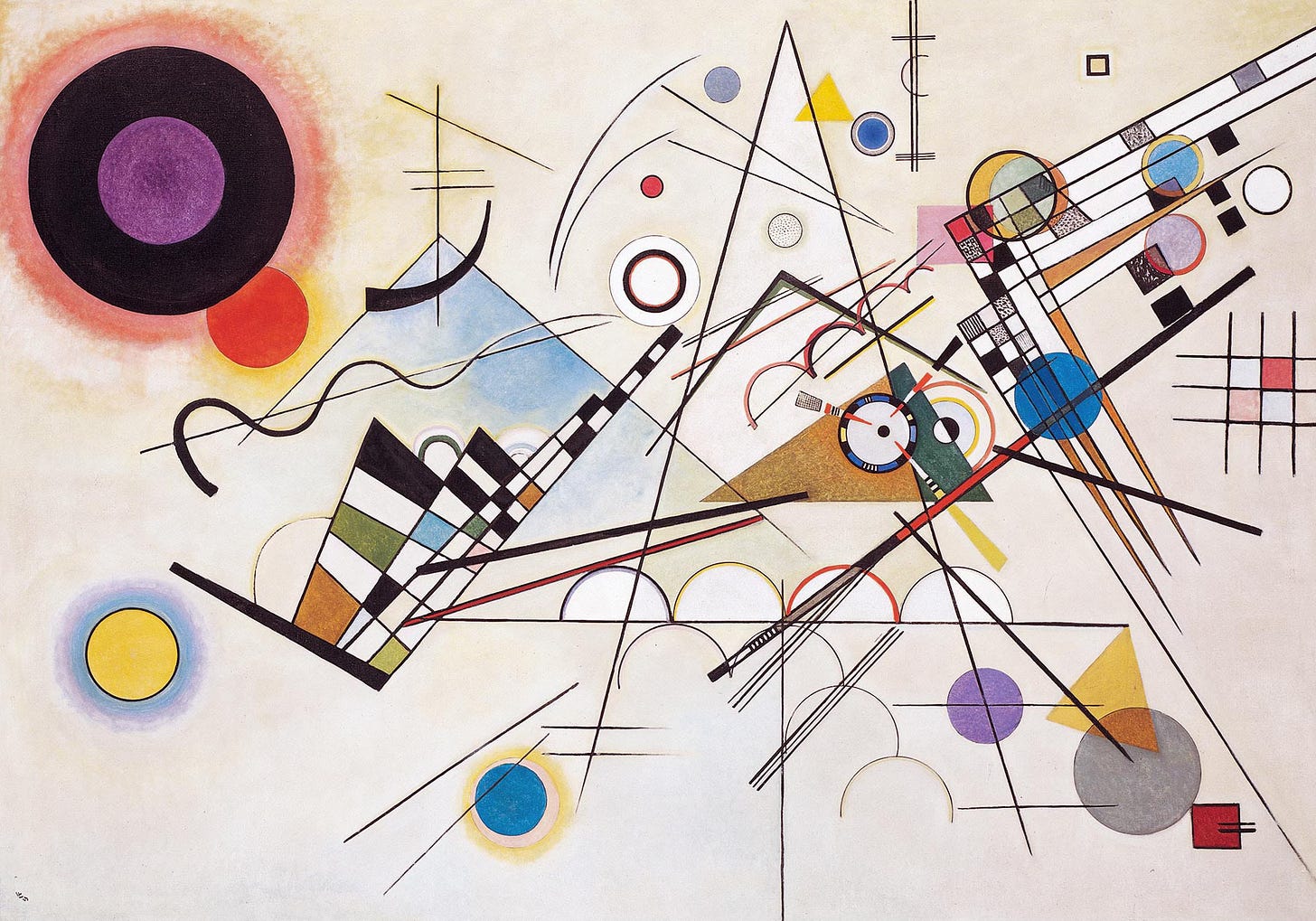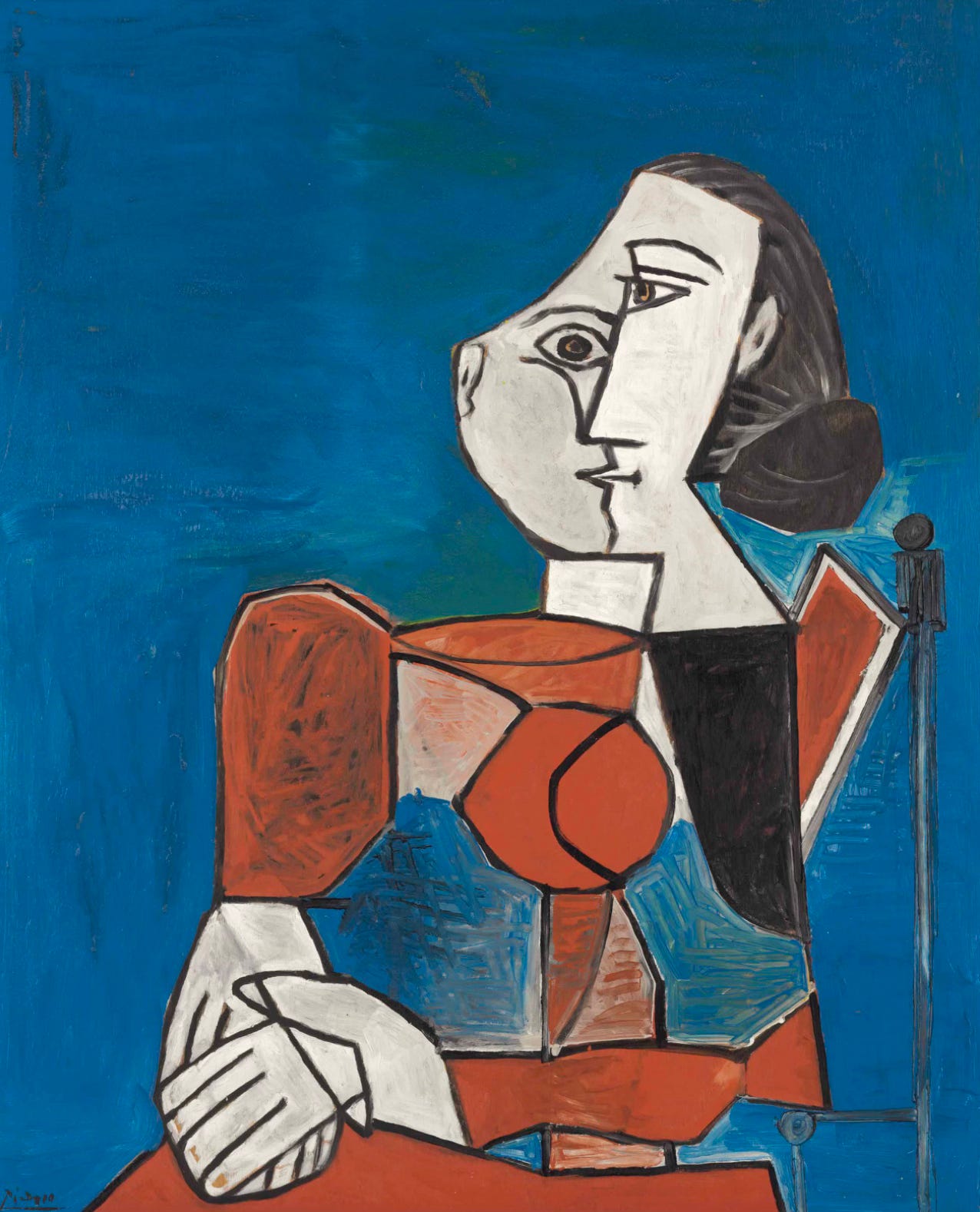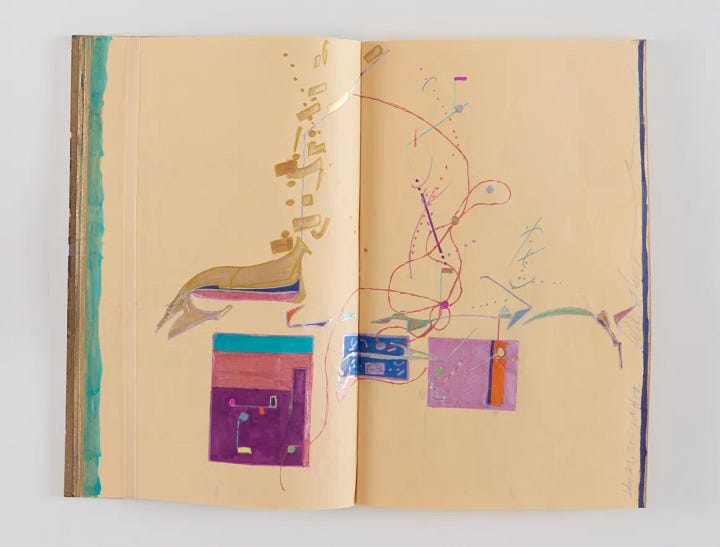Do you have Synesthesia? It's WebMD's most colorful diagnosis
On modern artists mixing paint...with colors, sounds, and feelings!
❥ This email may be truncated in your inbox. To make sure you are reading the entire post, please move yourself along to a web browser!
More from me + Absolument can be found in these places:
Website | Instagram | Shop Absolument | Book Recs - Merci, thank you tons and tons for reading!
When I hear about people with synesthesia, it always gossip of very gifted people, and it’s often linked with “having an overactive imagination.” My first thought is of artist Wassily Kandinsky because he painted sounds. This is called a “secondary effect” of synesthesia, and those who experience it often report that colors are projected onto their perceptions of reality. Whether literally in their line of vision, or more internally, as if on a screen in their mind.

A colorful brain screen! I totally have one constantly illuminated inside my mind, and now it’s immediately flashing with an exclamation mark! The screen is lime green for some reason, and the punctuation is black. Can WebMD diagnose this phenomenon? The only time I have ever been elated after looking something up on WebMD was this moment, as I was researching artists with synesthesia.
WebMD describes synesthesia as:
“When you hear music, but you see shapes. Or you hear a word or a name and instantly see a color. Synesthesia is a fancy name for when you experience one of your senses through another. For example, you might hear the name ‘Alex’ and see green. Or you might read the word ‘street’ and taste citrus fruit.
The word ‘synesthesia’ has Greek roots. It translates to ‘perceive together.’ People who have this ability are called synesthetes. Synesthesia isn’t a disease or disorder. It won’t harm your health, and it doesn’t mean you’re mentally ill. And while it may seem easy to make up, there’s proof that it’s a real condition.
One of the most common responses is to see letters, numbers, or sounds as colors.
You might also:
See or hear a word and taste food
See a shape and taste food
Hear sounds and see shapes or patterns
Hear sounds after you smell a certain scent
Hear sounds and taste food
Feel an object with your hands and hear a sound
Feel a touch when seeing someone else being touched.”
Scientific American describes it in a wonderfully eccentric way as well:
“When you eat chicken, does it feel pointy or round? Is a week shaped like a tipped-over D with the days arranged counterclockwise? Does the note B taste like horseradish? Do you get confused about appointments because Tuesday and Thursday have the same color? Do you go to the wrong train station in New York City because Grand Central has the same color as the 42nd Street address of Penn Station? When you read a newspaper or listen to someone speaking, do you see a rainbow of colors? If so, you might have synesthesia.”
Outing Man Ray’s synesthesia
Photographer Man Ray, who snapped thousands and thousands of images in the 1910s through the 1970s, explains “a little game” he played. Really, it outs him as a synesthete!
In 1948, he wrote the essay Juan Gris—Joan Miró—Pablo Picasso:
“There is a little game I play with myself for purposes of identification. It is based upon associations. Although I photographed them in black and white, I always saw painters in color. I mean, each painter in one color.
For example, Juan Gris is blue, Miró is yellow, and Picasso is red.
And please do not try to read any symbolism into this association. Blue, yellow, and red are the primary pigments of which all painting consists. No one has ever asked for an explanation of these colors beyond the number of vibrations they produce.
If I were pinned down to a monochromatic association, from the point of view of black and white, I should say gray for Juan Gris (just a coincidence in words—gris is French for grey), black for Miró, white for Picasso.
Then again, geometrically speaking, Gris is a square, Miró a circle, and Picasso a triangle. In the vegetable world, Gris is an artichoke, Miró an apple, Picasso a watermelon.
All this is no more arbitrary than the little game a group of friends once played in my studio in Paris. It consisted of giving each other nicknames, but carefully chosen so that they were in no way descriptive, or in any other manner related to the person or his work. Thus, one was a faucet, another a hose, a cricket, a cup of coffee, a pillow, a hammer, a bowl of onion soup, etc. Picasso was named (no, not a bull) ‘the lioness.’ These nicknames became just as valid as their original names, certainly no more descriptive, but equally identifying. And, they were ‘as beautiful as the meeting of an umbrella with a sewing machine on a dissection table.’ Neither Gris nor Miró were considered at the time, but I can add here for your satisfaction, my attentive reader, the two missing nicknames, to complete my own imaginative forays. Juan Gris is El Greco, Miró is a whistle.”


I never thought that word associations with emotional feelings or colors could be a form of this condition. For me, I’ve always strongly paired numbers, days, months, and certain words with colors and emotions—sometimes even with their own distinct, unshakeable personalities. It’s a bit like how you were certain in grade school that geography is green and math is blue, except this behavior evades every aspect of your existence. The number three is very difficult for me to be at ease around (honestly, I’m trying to heal this with my Three Pots of Inspiration series), and I put all of my trust in Tuesdays. Why? Ask my brain’s screen for answers.
Related Notes:
Vincent Van Gogh also showed signs of synesthesia, which The Art Story recounts as having added to the hysteria that he was mentally ill. “In 1883, when he was about 30, [Van Gogh] began studying piano, because, as his student Anton Kerssemakers explained, he was, ‘always comparing painting with music, and [wanted to learn piano] to get a better understanding of the gradation of tones.’ Shortly after beginning his lessons, van Gogh reported having the bizarre experience of ‘seeing’ a different color with every note he played.”
Musician Wadada Leo Smith has been creating non-traditional ways of illustrating music scores, and they’re such interesting pieces of visual artwork!


Everyone has a lot to say about Jackson Pollock, but as I’m writing this, I can’t help but envision him in the middle of his action painting. Was he hearing music while pacing above the canvas on the ground? I think I’m projecting here. The music toward the end of this SFMoMA video isn’t helping my theory, either!
**
Do you have subtle hints—or large, unbelievable splashes—of synesthesia?
x Kelsey







Every word is a specific color for me! I’m not sure if that’s specifically synesthesia, but maybe, or maybe something similar. I’m also a highly sensitive person (that’s a real thing), which is very tightly woven through my photography and painting.
I have what I think is a mild form of it - words and numbers, and also people have specific colours so that when I think of them I see the colour before their face. Emotions and memories are like Rothkos, and sex is pure psychedelics! I would love to see music as colour, but I’ve never made that connection, sadly.